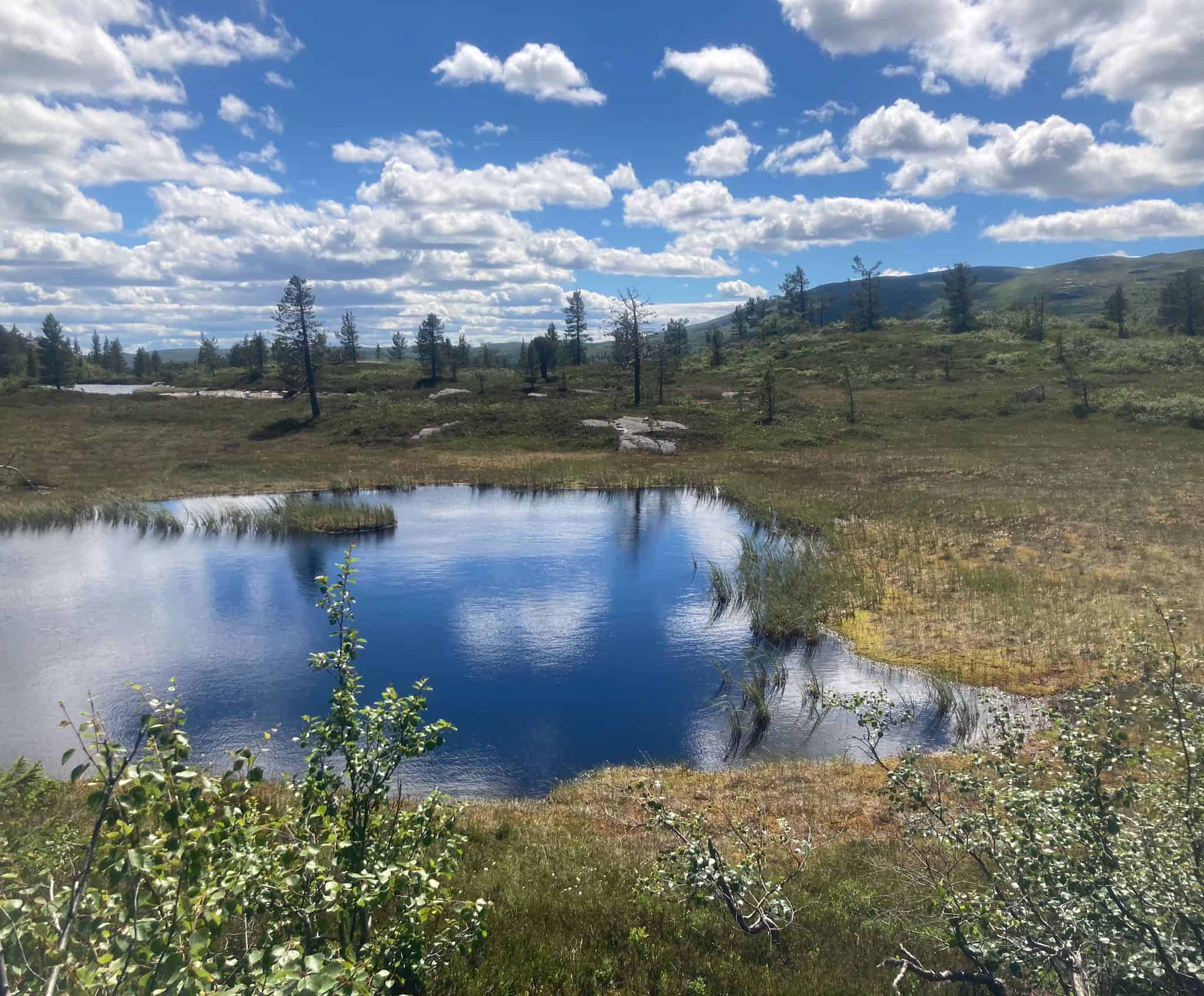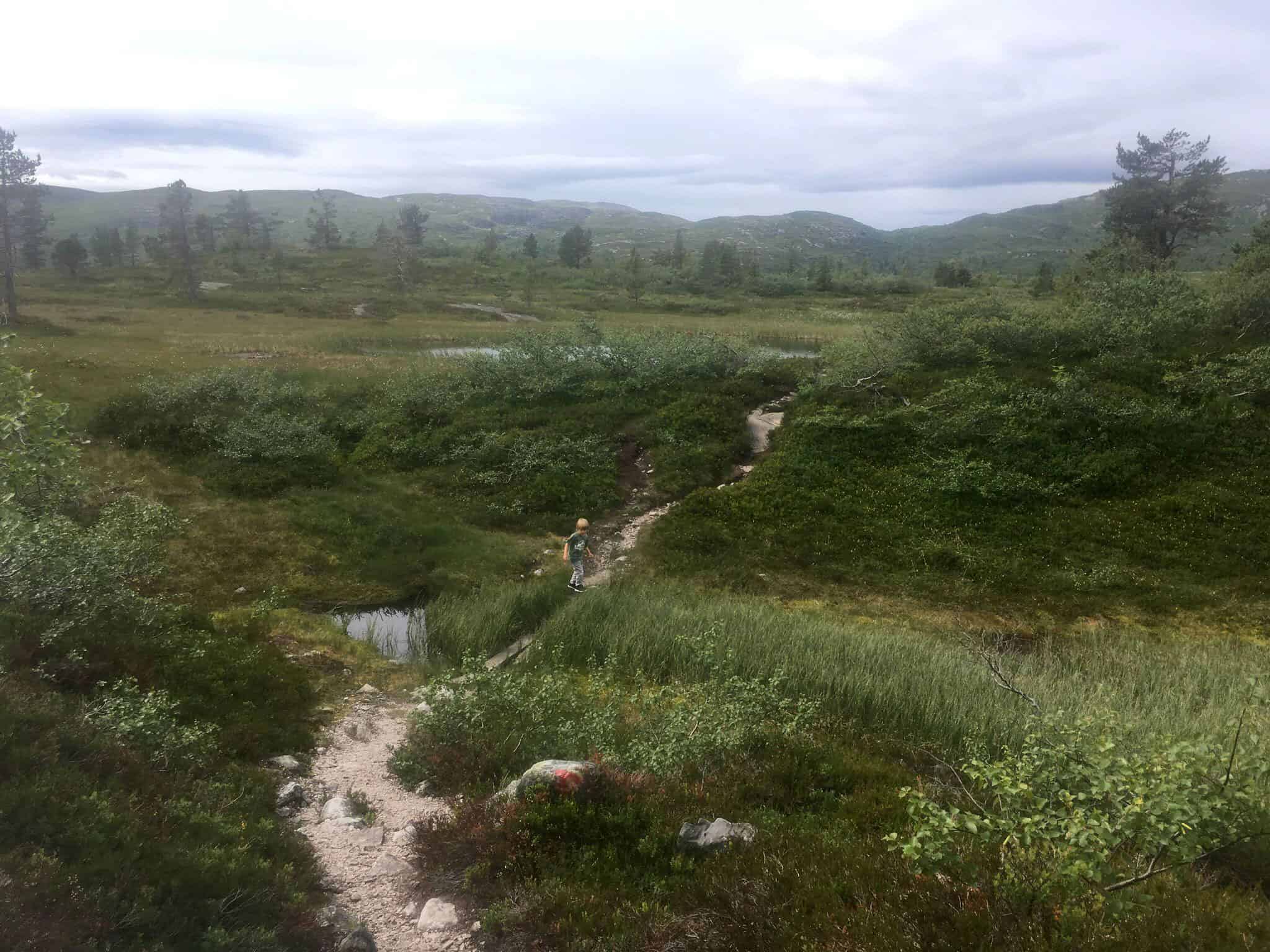WHEN
June 2021
WHERE
Bogerudmyra, a protected bog in Oslo, Norway, as well as peatlands in the mountains.
WHO
Randi Nygård and Simon Daniel Tegnander Wenzel
WHAT
Randi Nygård started doing fieldwork at bogs in different parts of Norway in June 2021. First she visited a large area of peatlands in the mountains of Norway where she smelled the bogs with her son and nephews. To them the scent was like soil and pine trees, and wet dogs and the ocean.
Together with her collaborator, artist Simon Daniel Tegnander Wenzel, Randi went to a protected bog in Oslo, Bogerudmyra. As they touched and sniffed the ground, strong scents of wet soil, dried grass and pine wood appeared. It was not rotten, as some might expect. The bog had an earthy, heavy, resinous, fertile and rich odor. It seemed dark, but still it was fresh and clear. And oceanic. There were hints of wet wool or fur – perhaps the scent of a wolf?
Following this fieldwork, Simon experimented in his laboratory and produced the scent titled ‘Wolves in the Mire’. One of the ingredients is geosmin, a substance produced by bacteria in the earth, known to humans as the scent of wet soil. This scent is a sign of micro-organisms in the soil, which tells us that it is alive. This is probably also what the bog has in common with the ocean: its water is the home of algae and organisms which produce distinct, almost erotic, odors. Our sense of smell is important for knowing our surroundings, for bonding to others, humans and animals, and for feeling at home. Imagine putting your nose into the fur or hair of your loved ones or into the moist moss and dark peat of a bog.
WHY
In Norway bogs have traditionally been seen as deep, dark and dangerous. They were places with shapeshifting water spirits like the nixie or huldra that lured people into the dark waters. Bogs were portals into the world of the gods in ancient times. The norse goddesses Frigg and Saga dwelled in swamps, fens and bogs. Bogs served as fridges and roads in the winter, the Sphagnum moss was used as mulch in farms, an absorbent liner within shoes and diapers and as an antiseptic dressing on cuts. Sheep grazed on the bogs and hay was harvested. Peat was extracted and burned to heat houses. Today we know that bogs are great carbon sinks, water filters, water suppliers and flood preventers, and to some extent they are protected in Norway.
Bogs are archives of both natural and cultural histories, storing information of how humans, plants and animals interacted and formed the landscape over thousands of years. Its stories can be told through pollen, charcoal, remains of plants, trees, animals and artifacts buried and partly conserved in the peat. The paradox is that excavations would kill the bog, puncture it and drain it, and so most of this matter should remain in the dark. Their stories can be shared in less tangible ways – oral, oracular, olfactory.
In Scandinavian languages there is a common saying: ‘owls in the moss’. It means that something is not quite right, a danger is lurking. Bogs are still being turned into farmland or roads. The saying was originally a Danish expression saying that there are wolves in the mire. Owls and wolves, moss and mire are very similar words in Danish, and as wolves went extinct in Denmark hundreds of years ago, the wording changed. Today there are still a few wolves in Norway and there are reports of their return to Denmark.
Our languages are thought to have evolved over so many thousands of years that the link between how a word sounds and what it represents has been broken. Still, if one compares the meaning of words that begin with the same sounds, they may sometimes have something in common, a movement or a visual form. We can sometimes also intuit a connection between them, like a poetic relation or memory we cannot fully grasp.
So what comes forth if one continues the evolution of “the owls in the moss” expression, by adding words with similar sounds?
wolves in the mire
owls in the moss
howls in the mass
wool in the mess
wombs in the mist
wounds in the moors
wood in the murk
wonders in the matter



